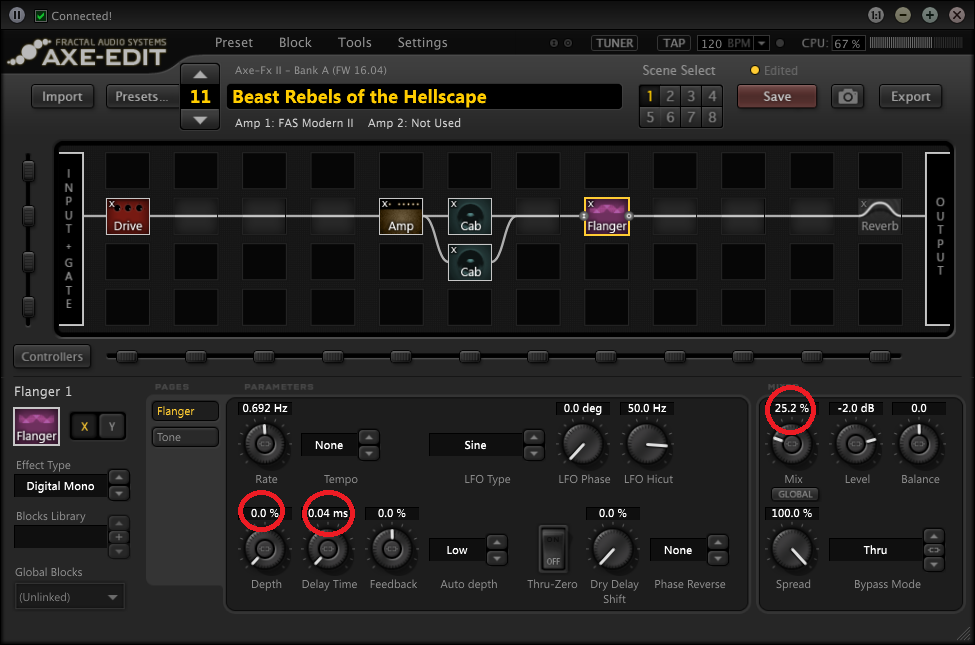laughyouraxeoff
Experienced
Great Post GM!!!!
This effect is strongest in mono.
Now when you have 2 different cabs, things get interesting.
Would someone be so kind as to post a preset or a screen shot of this signal chain? I want to be sure I'm getting it right. Thanks in advance.
+1
Screen shots would be very nice!

Based on what GM Arts said, this is how I set it up. Circled are the only settings I changed. I found I preferred 0.04ms delay over 0.06ms.

Based on what GM Arts said, this is how I set it up. Circled are the only settings I changed. I found I preferred 0.04ms delay over 0.06ms.

But for mono paths, the screenshot above is correct. The mix setting controls a blend between the undelayed and delayed signals. Set it at 50% for maximum effect or lower for less effect, as you've done, mnemonic. Likewise, start with 0.06mS delay, and lower it to move the treble cut to higher frequencies.
You're right: that's exactly the point. And that's what the flanger is doing here.hmmm… I thought the point of this even in mono was to delay one cab and not the other..
